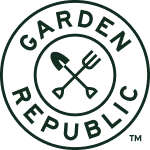If you are looking for a space-friendly and innovative way to grow your herbs vertically and mimic beautiful natural patterns, herb spirals are a creative way to do so! You can build them just about anywhere, from your veggie garden to your concrete patio. Herb spirals have the benefit of little micro-climates within themselves so that you can grow more varieties per square inch.
How Do They Work?
The spiral design is not without a cause. Not only is it beautiful and pleasing to the eye, but it also has a practical purpose, integrating its unusual garden design to create a space full of biodiversity!
The garden bed starts in the center, which is the highest point of the bed, cascading downwards to ground level ( or low/high as you like). This pattern creates spaces with more sunlight/shade than others during different parts of the day. Also, since it has different heights, the lower spots will stay moister, while the highest point will be more dry and well-draining, catering to many kinds of plant varieties. While regular drip irrigation will do, It is common to catch the water at the bottom of the spiral to create a pond and re-circulate the water back to the top.
Taking into consideration what herbs you want to grow and the direction of the sun available, you will want to plant full sun-loving plants on the south side and the more shade-loving thirsty plants on the north side.
If you really want to put your thinking cap on and put some thought into your garden design, you can orientate herb spirals to be built in the same direction that water flows down a drain. Water rotates down the drain in a clockwise direction in the Northern hemisphere( where most of you likely are) and counterclockwise in the Southern hemisphere. If you are in the Northern hemisphere, the spiral's bottom( or pond if you choose) will need to face north. If you are in the Southern hemisphere, the spiral's base/pond.
What Plant Can I Grow?
First, you'll need to choose whether you want to plant culinary herbs for making dishes or go the route of growing herbs that have more medicinal uses to make things such as tea, tinctures, and salves. Of course, these can be mixed and have some cross-over!
Sun-loving plants that can handle slightly drier soil such as Rosemary, Lavender, Lemonbalm/Grass, Oregano, and Chives can go at the top/ south and south-east facing. Herbs that need a little more water and can tolerate a bit of shade, such as Basil, Cilantro, Parsley, Thyme, and Sage, can go East/ North-East Side. The plants such as mints/spearmints that want the most water should go on the Northside/bottom.
Where Can I Get Seeds?
If you are looking for quality, organic, non-GMO seeds to purchase or need to up your stock of herbal seeds, our Heirloom Seeds Sets and Starter Kits offer a large variety of options!
Our Culinary Herb Seed Kit has Genovese Basil Seeds, Chives, Coriander / Cilantro, Dill, Oregano, Large Leaf Italian Parsley, Sage, English Thyme, Arugula, and Mint (Mentha Piperita). Our Herbal Tea Seed Kit has Cinnamon Basil, Echinacea, Peppermint, Marjoram, Lemon Balm, Dandelion, Lavender, Fennel, Chamomile & Catnip to keep you in good health and spirits! 

And as always, Our seeds come with an almost 24/7 customer support team to assist them in their growing adventure. During business hours, we have a team of experts answering emails and instant messages that come through. After hours, we let our friendly, automated garden bot, "Sprout," take over. He can answer most of the questions, but when he gets stumped, our team will answer them first thing in the morning. The kit also includes a unique code that will gain access to our private Facebook Growing Community, which is full of tips, tricks, and helpful videos on how to be the best seed-sprouter as can be!
Our Grower Support is also available by email at wecare@shopgardenrepublic.com


